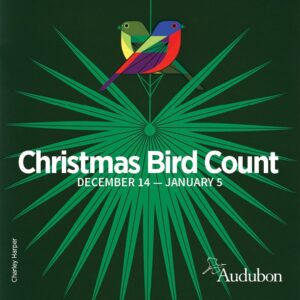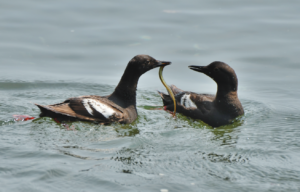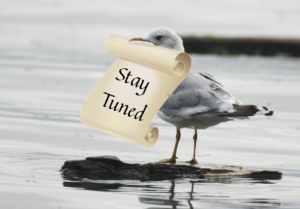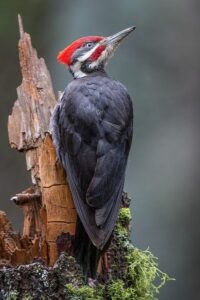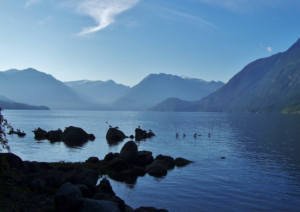Jennifer DeSelle – October 31, 2020
Map: Woodard Bay Conservation Area; eBird: Woodard Bay Preserve

Location: Woodard Bay Rd. NE in Olympia; the trailhead is at a small parking lot where the seasonal boat launch is located. (Just a short ways up the road is a larger parking lot at the head of the Chehalis Western Trail. There is also a short seasonal trail that goes from this parking lot as well.)
Parking: There is a small parking lot. Car break-ins are frequent, so do not leave valuables in your car. A Discover parking pass is required.
This trail can get crowded, so bring your mask! Dogs and bicycles are not allowed.
There is a pit toilet at the end of the trail. It is generally well-maintained. Bring your own hand sanitizer. There is no water available at this site, so bring your own. Cell coverage is spotty.
A scope is definitely recommended for the end of the trail, which looks out into Puget Sound.
Trail: There is an out and back paved road (foot traffic only) that is .75 miles one way. It does have some rolling hills, but is not strenuous. Wheelchair access is possible at the side of the entry gate. There is a 1.5 mile long “loop” trail that goes through the forest. The wooded “loop trail” will be closed into early 2021 for trail maintenance.
The paved road passes through a traditional PNW forest, complete with Douglas Fir, Red-Western Cedar, Big Leaf Maple, and an understory lush with sword ferns. This is one of the prime habitats for Pacific Wren, which can often be heard singing and calling as you stroll down the road. Varied Thrush are often observed foraging with their cousins, the American Robin. Look for sparrows along the edges of the road, hopping in and out of the understory. Oregon Junco, Spotted Towhee, Golden-crowned Sparrow, Fox Sparrow and the ubiquitous Song Sparrow can be found along the way. This is also a great habitat to encounter woodpeckers, such as Hairy and Pileated Woodpeckers. Mixed flocks of chickadees, kinglets and warblers are common.

The trail ends at Weyer Point, with Woodard Bay to the right and Chapman Bay to the left. Henderson Inlet is straight ahead. This is the perfect place to set up your spotting scope and scan the water. Woodard Bay is a prime spot for wintering waterfowl, and will not disappoint. There is also an old railroad trestle where great blue herons can be found congregating, sometimes as many as 100. In the summer this trestle is home to a colony of Yuma myotis bats, who raise their young here every year. Harbor seals are often hauled out on the floating rafts in Henderson Inlet.
Highlights: Out on the water on today’s trip were 18 FOS (First of Season) Barrow’s Goldeneyes, 6 Horned Grebes, and upwards of 100 Surf Scoters. Bufflehead are also arriving in good numbers. We had a flyover from the resident Peregrine Falcon and an immature Bald Eagle. Twenty Great Blue Herons were congregating on the trestle.
Forest highlights included a flyover of 50+ Red Crossbills, and at least 40 Pine Siskins. There is a good cone crop this winter, so expect lots of finches! Pacific Wrens could be heard, although not seen, throughout the walk. We encountered many mixed flocks which included a Townsend’s Warbler. A Varied Thrush could be heard calling in the forest.
BEFORE YOU GO:
Before heading off for a birding adventure, here are some things to consider –
1. It’s always best to have a partner with you – both to maximize the joy and to minimize the risks. BHAS cannot ensure that these locations are totally safe.
2. Don’t forget to bring your mask and hand sanitizer. Have your mask handy and put it on when passing another person not in your party.
3. Leave valuables at home.
4. Check the weather and the bird reports before heading out. An easy way to check what birds have been seen is through Birder’s Dashboard http://birdingwashington.info/dashboard/. It is a simple way to research a species, place, or checklist.
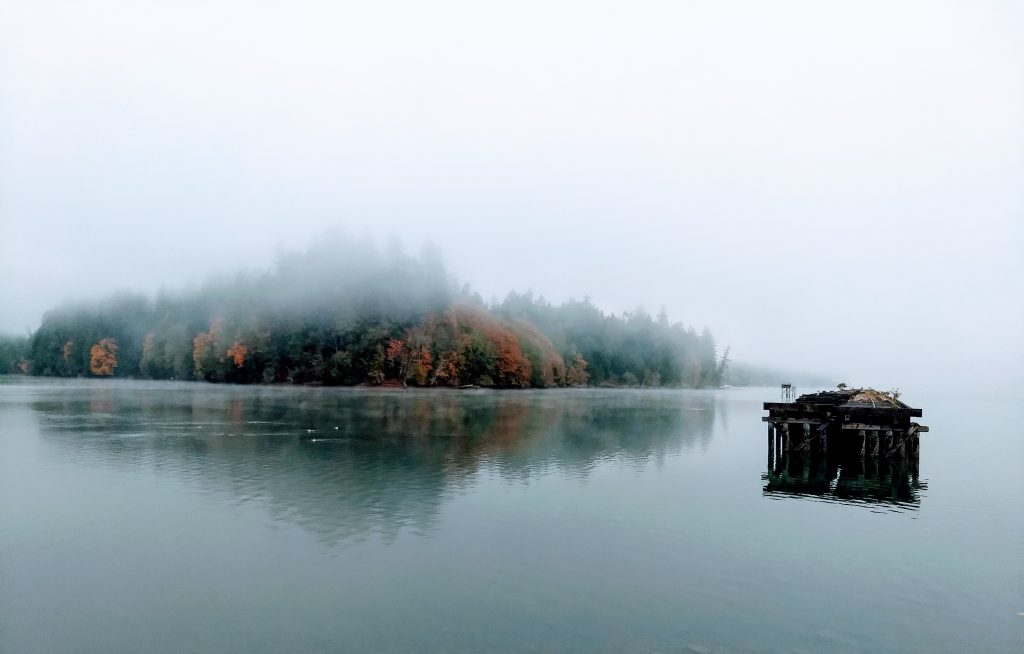
Photos by Jen DeSelle


